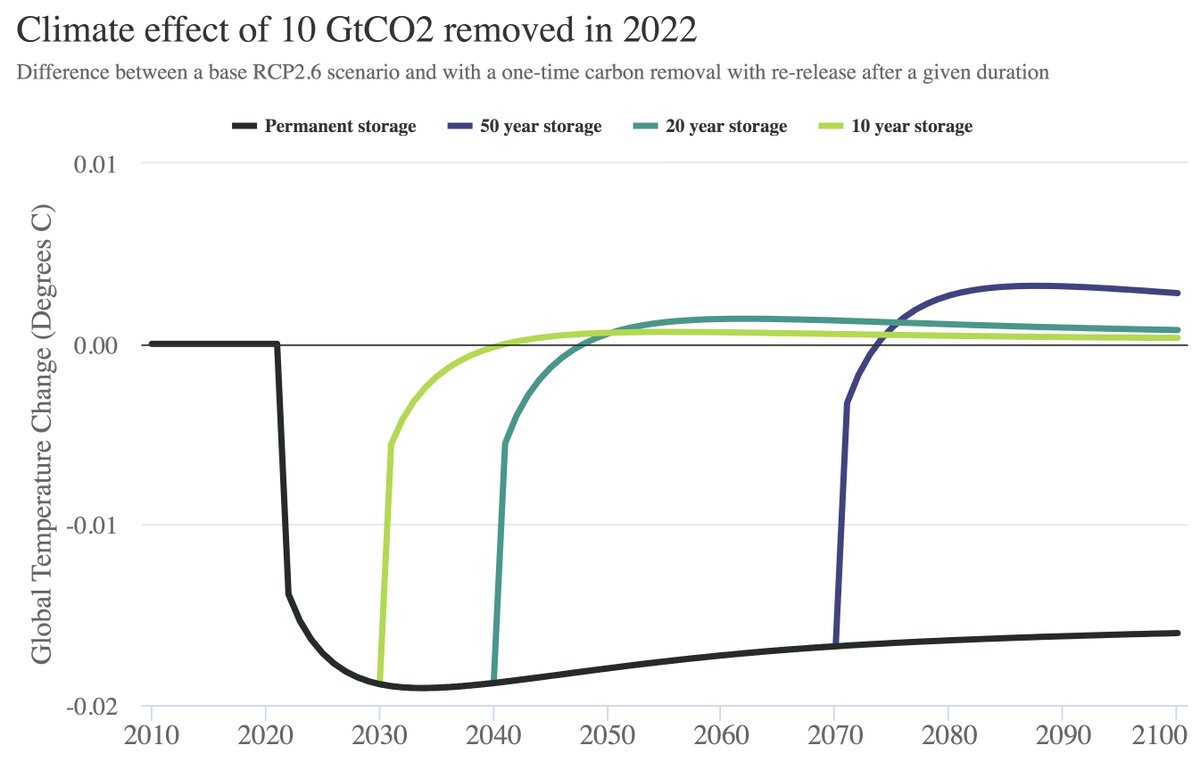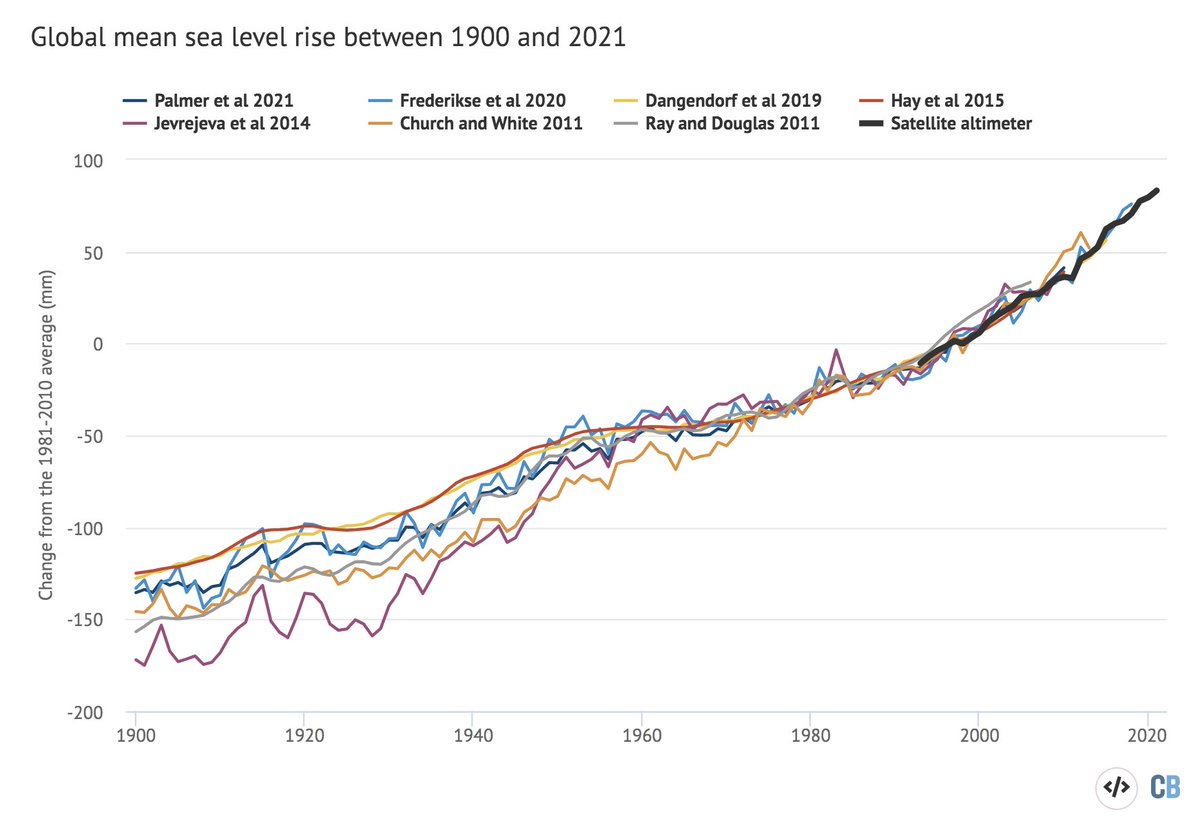
I've long argued against being overly deterministic about climate outcomes based on emissions scenarios, and this article is case-in-point. A 4C warming by 2100 outcome by 2100 is unlikely, but unfortunately we cannot fully rule it out today. reason.com/2022/02/09/wor…
Specifically, current policy outcomes result in ~2.7C warming, while worlds where we meet our Paris commitments result in ~2.4C. The new paper covered in this article implicitly models a world of strengthening policy where we end up around 2.2C.
But all these numbers come with large uncertainties; even if we know future emissions for certain, the amount of warming we end up with also depends on climate sensitivity and carbon cycle feedback uncertainties.
These are more poorly constrained, and modeling we have done suggests that there is likely a non-trivial chance of 4C outcomes in a current policy world. If we continue to strengthen policy we will put it more firmly out of reach, but thats a big IF. thebreakthrough.org/issues/energy/… 

Note that this criticism is of the statement in the @reason article that "So man-made global warming of 4C by 2100 above pre-industrial levels is not a real possibility." The ERL paper it discusses has a more nuanced take on these issues.
Ignore the second "outcome by 2100". The dangers of morning tweeting pre-coffee.
• • •
Missing some Tweet in this thread? You can try to
force a refresh













